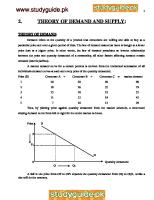The Stroke - Theory of Writing - Gerrit Noordzij PDF [PDF]
Gerrit Noordzij The strol(e theory of writing eee eeeee�e� e�e�ee�e ee The stroke clf/-ljt · ®omr7zuJ Vanulll
24 0 4MB
Papiere empfehlen
![The Stroke - Theory of Writing - Gerrit Noordzij PDF [PDF]](https://vdoc.tips/img/200x200/the-stroke-theory-of-writing-gerrit-noordzij-pdf.jpg)
- Author / Uploaded
- Camila Sayuri
Datei wird geladen, bitte warten...
Zitiervorschau
Gerrit Noordzij
The strol(e theory of writing
eee
eeeee�e� e�e�ee�e ee
The stroke
clf/-ljt
·
®omr7zuJ
Vanulll est vobis
ante lucem surgere
surgcrc postquatn scdcritis qui nundu ca.tis pan em doloris cutn dedcrit dilcctis /
SUtS 5011\nUtn_,
0'srum12T2
Gerrit Noordzij The stroleposuit'potmtts desede et exaltavit humilcs esurientes implevit bunus et divites dimisit /
tnanes
Lucas 1 : 5 2 . 53
67
7·
THE GREAT B REA K
What distinguishes a Burgundian nobleman from a hu manist? In The waning of the middle ages Johan Huizinga answers: 'Charles the Bold still read his classics in trans lation.' Presumably this answer says more about the dif ference between a nobleman and a scholar than about the suggested difference between the middle ages and the ren aissance. Huizinga himself cannot identify clearly the dif ference between Burgundian and Italian authors. The differ ences in accent he points to are substantially more modest than the differences in national character that exist, or so we are led to believe, on either side of the Alps. At the end of the fifteenth century something is in the air, but it does not ma terialize. Huizinga wishes to illustrate the lucid simplicity of the renaissance, but finds, precisely in the imitation of the I talians, only 'extreme swollenness' and an even more man nered bombast than in his flamboyant middle ages. Huizin ga waits for the springtime of the renaissance after his wan ing, but he waits too long. When his middle ages have passed the renaissance is finished as well. The new phenomena that bewilder him are not the incomprehensible signs of a slug gishly approaching renaissance, but typical expressions of mannerism. Huizinga knew what he could not let himself believe: the middle ages are the renaissance. One ought not to believe such a thing, but Huizinga has no option but to affirm that the ideal of the French culture of chivalry is the ideal of the renaissance.And when he has described his quin tessential mediaeval figure, Charles the Bold, his conclusion comes as a confession: 'This self-conscious savoir-vivre is ac tually, in spite of the stiff and naive forms, completely ren aissance. It is [ ... ] the most characteristic property of Burck hart's renaissance man.' Yet, on the last page of the book, after all of this is gone for good , Huizinga is still waiting for the fresh full wind that will purify the air. It is good that he stops there, because, when mannerism has run its course, all that remains is a bourgeois self-sufficiency of which only the name is fresh, the enlightenment. 68
The apostles of the enlightenment had uncovered the true shape of antiquity lost from sight in the 'dark ages'. Across this mediaeval side-path they laid a new road to the sources of civilization. Figure 7.1 shows (left to right) the classical, a mediaeval and the classicistic form of the capital D. The clas sicistic D appears to have rediscovered the purity of the clas sical form, which had got lost in mediaeval tomfoolery. Fig ure 7.2 is a schematic of the strokes with which the letters of figure 7. 1 are made. Now a new picture emerges: in mediaeval culture the classical principle is preserved unscathed, and it is classicism that has departed from the classical founda tion in order to orient itself toward a chimera, a utopia of its own making, put forward as the true antiquity. This makes sense to anyone who does not look closely. Official culture, distancing itself from authentic culture, is based upon this trick of the eye. This masquerade of wanting desperately to clothe oneself in a culture other than our own is, taken by it self, an innocent hobby, but the extent of it makes the sport dangerous: talent is tracked down and transplanted into a pseudoculture, to the point where the chasm between soci ety and so-called 'cultural life' has become the mightiest in stitution of western civilization.
7- 1
U









